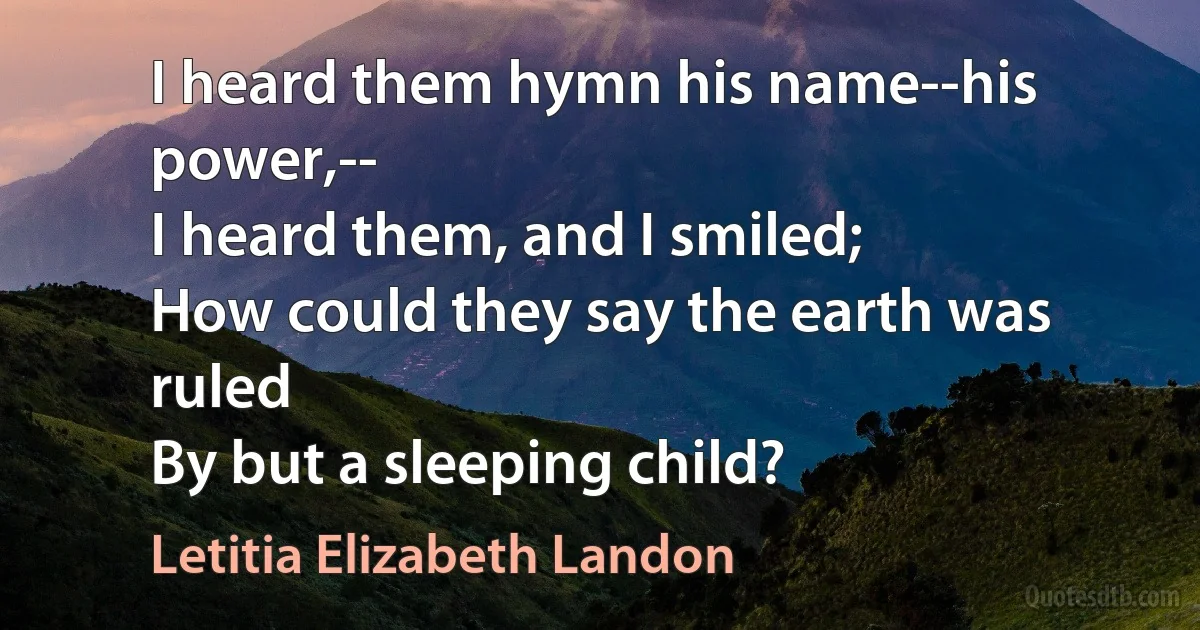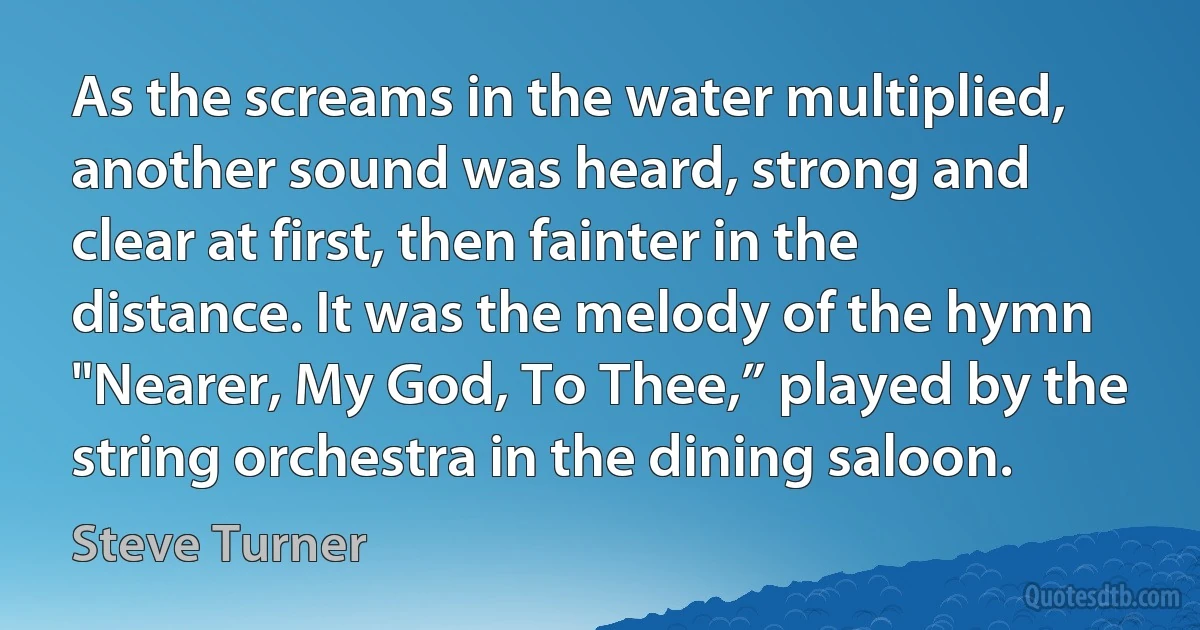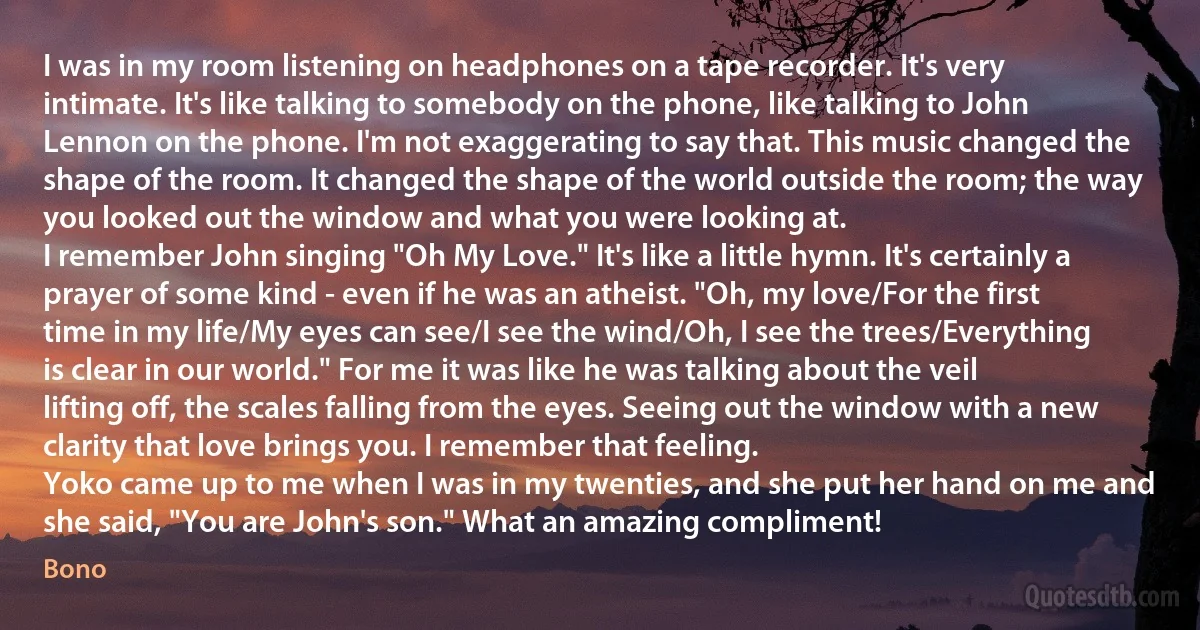Hymn Quotes - page 3
A slave's soul has no worth, my brothers; it lacks strength to tread on this great earth with gallantry and freedom. I pity the poor slaves, they're nought but airy mist, a light breeze scatters them, a fragrance knocks them down; it's only just they crawl on the earth on hands and knees. Today I'll write a hymn to God and pray for this great grace.

Nikos Kazantzakis
If in the nineteenth century most scholars identified the Ghaggar-Hakra's course with the Vedic Sarasvati, it is basically for three reasons. The Rig-Veda, the oldest of the four Vedas, mentions various rivers but praises the Sarasvati above all others: it was a "mighty river" flowing "from the mountain to the sea", and one hymn listed it between the Yamuna and the Sutlej - precisely the location of the Ghaggar-Hakra. Secondly, the local traditions regarding the "lost river" of the Indian desert matched those in the post-Vedic literature (including the Mahabharata), which recorded the gradual disappearance of the Sarasvati. Thirdly, scholars noticed a minor tributary of the Ghaggar called "Sarsuti", an obvious corruption of "Sarasvati": it rises in the Sirmur hills that are part of the Shivaliks and was marked on British maps as early as in 1788. Putting these three lines of evidence together, they concluded that the lost Sarasvati could only have flowed in the Ghaggar's bed.

Michel Danino
I sing the hymn of the conquered, who fell in the battle of life,
The hymn of the wounded, the beaten who died overwhelmed in the strife;
Not the jubilant song of the victors for whom the resounding acclaim
Of nations was lifted in chorus whose brows wore the chaplet of fame,
But the hymn of the low and the humble, the weary, the broken in heart,
Who strove and who failed, acting bravely a silent and desperate part.

William Wetmore Story
Ostensibly the hymn is from the final stage of Rig-Vedic composition, shortly before Veda-Vyasa's final editing of the hymns into the fully-formed Vedas. It soon became the Vedic bedrock of varna doctrine and gets reproduced or quoted to that effect in younger Vedic writings, including the Atharva & Yajur Veda (so, there also interpolations?), the Panchavimsha Brahmana, Taittitiya Aranyaka, Mahabharata and Bhagavata Purana.

Koenraad Elst
At another point, Witzel writes: "Talageri also views as interpolations the vAlakhilya hymns of 8.49-59 (although these are, in fact, included and analyzed in zAkalya's padapATha)” (§1). Is it, to begin with, Witzel's contention that if a hymn or verse is "included and analyzed in Shakalya's padapatha”, it automatically means that the hymn or verse in question is not an interpolation? All scholars are in agreement that the Valakhilya hymns are later than the other hymns in Mandala 8, and were inserted later into the middle of the Mandala in the Shakalya Samhita.

Shrikant Talageri
Witzel frequently refers to the references to armaka, "ruins", in the RV, as evidence that the RV is later to the desolation of the Indus cities... In any case, the word armaka, so frequently referred to in the post-RV literature, is found in the RV only in one late hymn in a Late Book: in I.133.3. The Early and Middle Books, and even much of the Late Books, are totally ignorant about these ruins.

Shrikant Talageri



